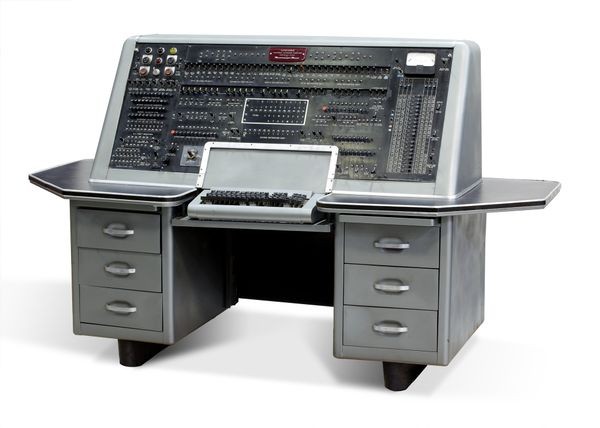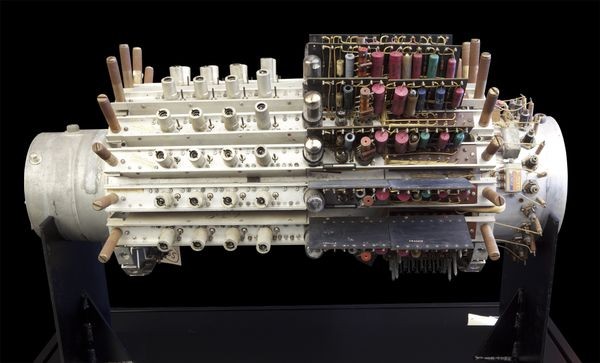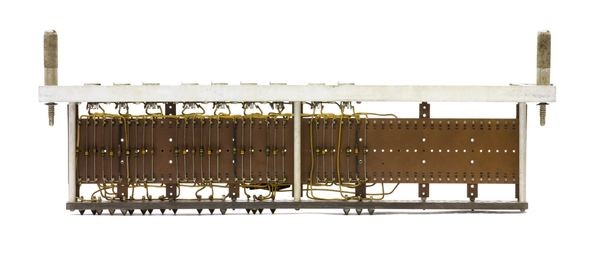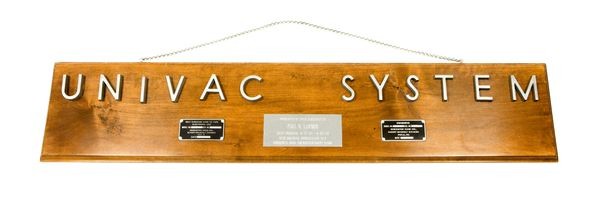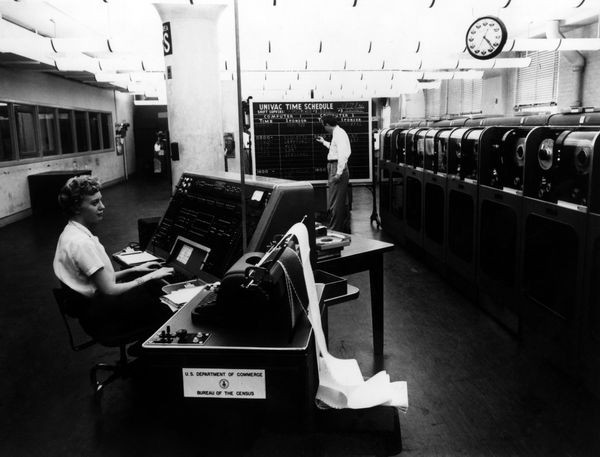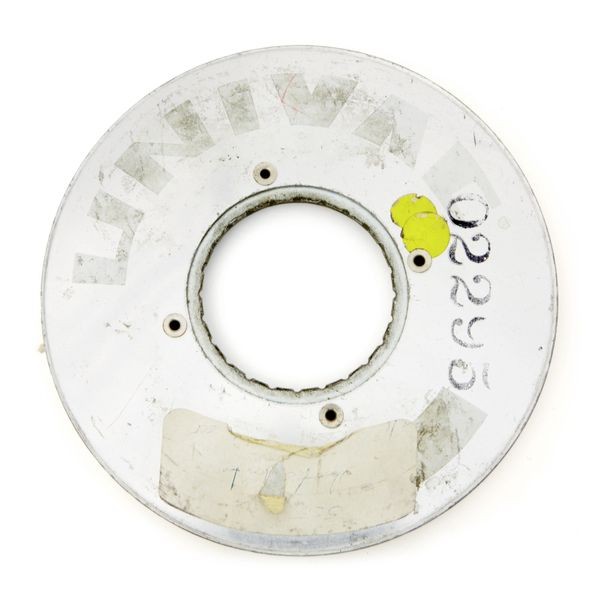UNIVAC
UNIVAC I supervisory control console
This console could start, interrupt, and stop the UNIVAC I. The operator used the keyboard to send instructions directly to the computer. An oscilloscope could be connected to the console for maintenance work.
UNIVAC
Computing burst into popular culture with UNIVAC (Universal Automatic Computer), arguably the first computer to become a household name.
A versatile, general-purpose machine, UNIVAC was the brainchild of John Mauchly and Presper Eckert, creators of ENIAC. They proposed a statistical tabulator to the U.S. Census Bureau in 1946, and in 1951 UNIVAC I passed Census Bureau tests.
Within six years, 46 of the million-dollar UNIVAC systems had been installed—with the last operating until 1970.
UNIVAC I mercury memory tank
For memory, the UNIVAC used seven mercury delay-line tanks. Eighteen pairs of crystal transducers in each tank transmitted and received data as waves in mercury held at a constant 149ºF.
View Artifact DetailUNIVAC I vacuum tube chassis
These plug-in modules were the foundation of UNIVAC’s construction. Twelve chassis were mounted in each section, three sections formed a bay, and 13 bays made up the sides of the central computer.
View Artifact DetailUNIVAC system plaque
Paul Lawson led the maintenance team for the UNIVAC I computers at Life and Casualty Insurance of Tennessee. The company’s two UNIVAC I machines were the last running anywhere in the world when shut down in 1970.
View Artifact DetailNecessity, Invention, and the U.S. Census
Every decade, America counts its citizens. And every decade, there are more to count.
In 1890, Hollerith’s punched card system met the challenge. Half a century later, Mauchly and Eckert proposed UNIVAC to tabulate census statistics. Completed in 1951, UNIVAC succeeded. "We have never found it in error," testified a Census Bureau official.
Bureau of the Census UNIVAC
Remington Rand sold two UNIVAC I computers to the Bureau of the Census. The Bureau didn’t use its UNIVAC computers for the full population count, rather, it was used for a smaller business-related census.
View Artifact DetailFast Storage for a Fast Computer
Business computers in the early 1950s spent just 10% of their time processing data, and 90% handling punched cards or printing. Eckert and Mauchly changed that equation.
Alongside UNIVAC they introduced the Uniservo magnetic tape drive. It read and wrote data 10 times faster, although customers initially mistrusted replacing tangible cards with “invisible” information on tape.
UNIVAC I Uniservo tape drive
A UNIVAC I system could accommodate up to 10 attached Uniservo tape drives. The awkward pulley system, and the hook-and-eye arrangement of the take-up reel, was later abandoned.
View Artifact DetailUNIVAC metal tape
UNIVAC tapes were ½" wide, 0.0015" thick, up to 1,500' long, and made of phosphor-bronze with a metallic coating. Weighing about three pounds, each reel could hold 1,440,000 decimal digits and was read at 100 inches/sec.
View Artifact DetailJohn W. Ellison and UNIVAC
John W. Ellison, rector at an Episcopal church, produced the first computerized concordance of the Revised Standard Version of the Bible. Text analysis required dozens of tape reels because of UNIVAC’s small memory.
View Artifact Detail